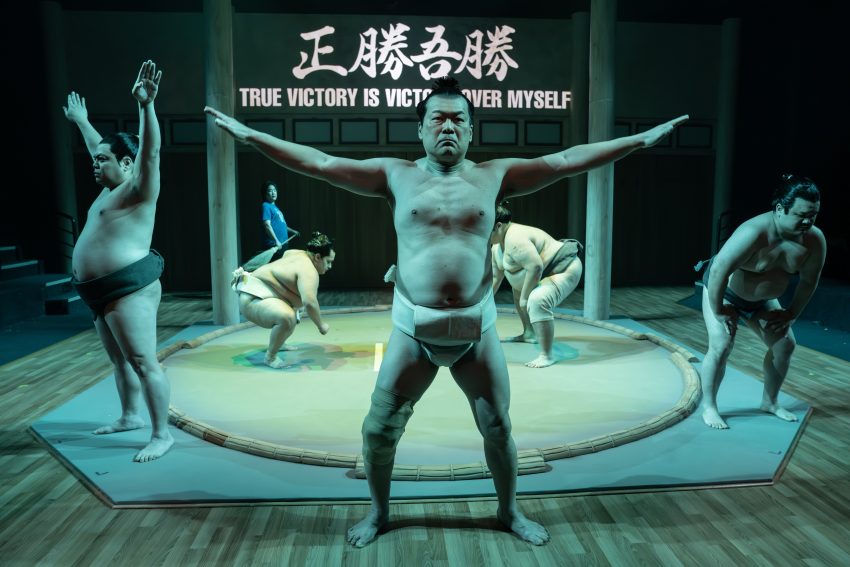
“Sumo”: A Tale of Power, Leadership, Redemption—at The Public, N.Y.
Lisa Sanaye Dring Envisions a New Kind of Leader
by David Moore
Lisa Sanaye Dring’s “Sumo” invites us into the ritualistic world of sumo wrestling. Beneath the physical discipline, “Sumo” displays power and love: who needs it, who gets hurt, and who can transcend into the divine.
Playwright Dring and director Ralph B. Peña skillfully balance spectacle and introspection, immersing audiences fully into sumo’s sacred and ritualistic dimensions. The visual design by Wilson Chin, Mariko Ohigashi’s precise costumes, and the striking fight choreography elevate the story into an engrossing visual spectacle. Elegant fight sequences become both brutal and graceful, echoing both bulldozer and butterfly. Shinta, played by Earl T. Kim, physically dominates the stage and the ring, with his impressive size.
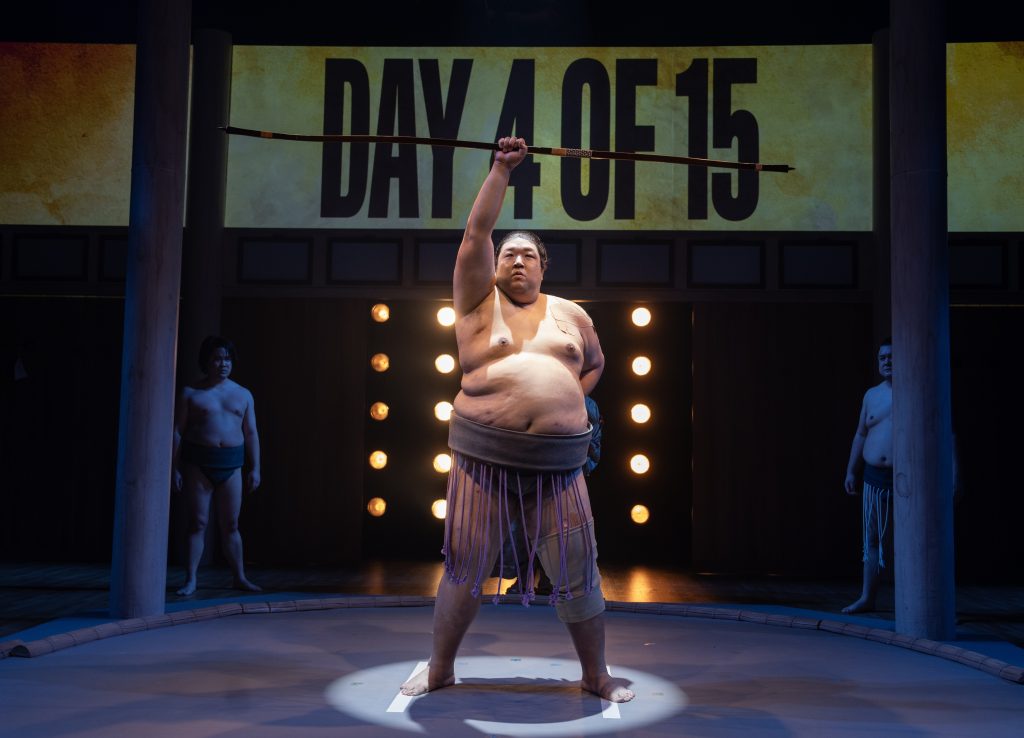
“Sumo” asks us to reflect on the nature of power: Will leaders exploit their authority or uplift others? Dring offers a champion whose power is defined not by dominance but by humility and service. In a time when toxic leadership feels pervasive, “Sumo” powerfully reminds us of the enduring value of integrity, empathy, and strength.
In the dohyō or circular ring, two wrestlers’ rivalry defines the play’s moral universe. Mitsuo, played compellingly as both villain and tragic hero by David Shih, begins the story as Ozeki, second only to the top Yokozuna rank.
Mitsuo leads his sumo stable through intimidation and coercion rather than respect. Rather than inspiring, his power breeds resentment. Shih’s Mitsuo embodies contradictions: he is respected in rank but despised personally. He is disciplined physically yet morally compromised.
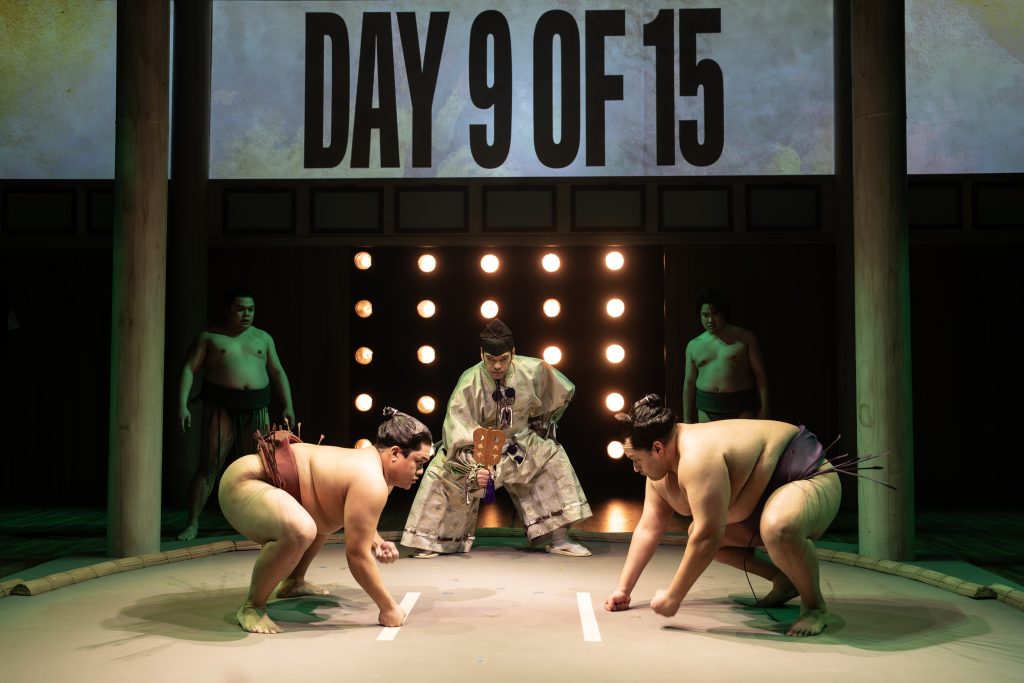
Mitsuo’s indulgence in women, whiskey, and bribery reveals a deeper corruption: the pursuit of power for its own sake. As a leader, his authority is hollow.
Against Mitsuo stands Akio talented Scott Keiji Takeda, an ambitious young wrestler. Akio is humble yet fiercely driven. Starting as an unranked maezumō, he quietly rises through the ranks without compromising his integrity.
Akio’s personal purity contrasts sharply with Mitsuo’s self-indulgence. Akio’s ascension is grounded in humility and benevolence. Leading by example not coercion, he cleans the floors after he becomes Yokozuna, Akio embodies the Zen koan: “Before enlightenment, chop wood, carry water. After enlightenment, chop wood, carry water.”
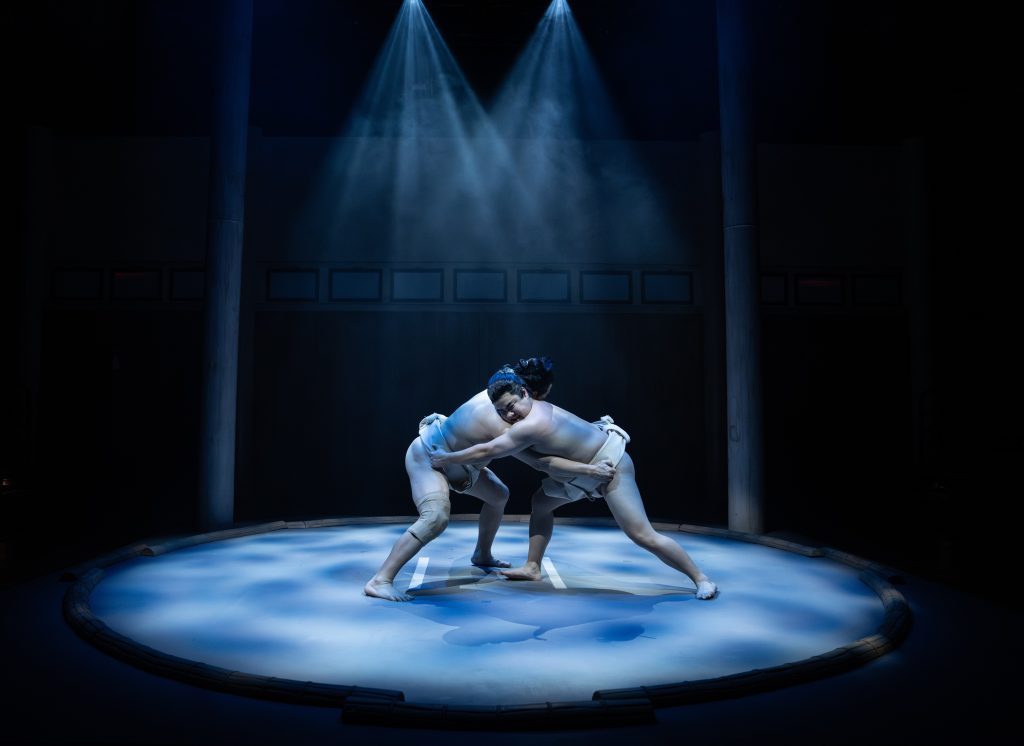
His simple act of humility defines a new vision of leadership, marked by integrity, empathy, and a sense of duty, rather than entitlement. Akio’s poignant alternative to Mitsuo’s corrupt authoritarianism feels hopeful in Trump’s America where power replaces true leadership.
Akio offers a hopeful alternative: leadership rooted in quiet strength, wisdom, and compassion.
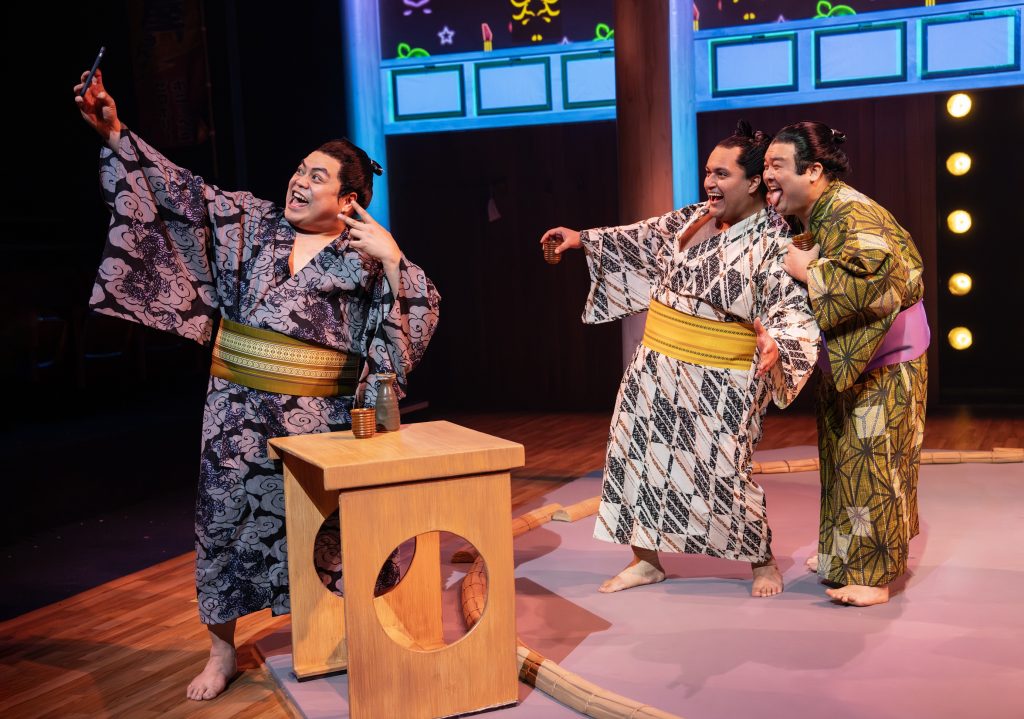
“SUMO” by Lisa Sanaye Dring, a co-production of Ma-Yi Theater Company & La Jolla Playhouse, directed by Ralph B. Peña, scenic design by Wilson Chin, costumes by Mariko Ohigashi, lighting by Paul Whitaker, sound & music by Fabian Obispo, taiko drumming by Shih-Wei Wu, at The Public Theater, New York.
Info: publictheater.org – to March 30, 2025.
Cast: Kris Bona, Red Concepción, Michael Hisamoto, Ahmad Kamal, Earl T. Kim, David Shih, Scott Keiji Takeda, Paco Tolson, and Viet Vo.
Banner photo: David Shih (center) & company of “SUMO.” Photos: Joan Marcus